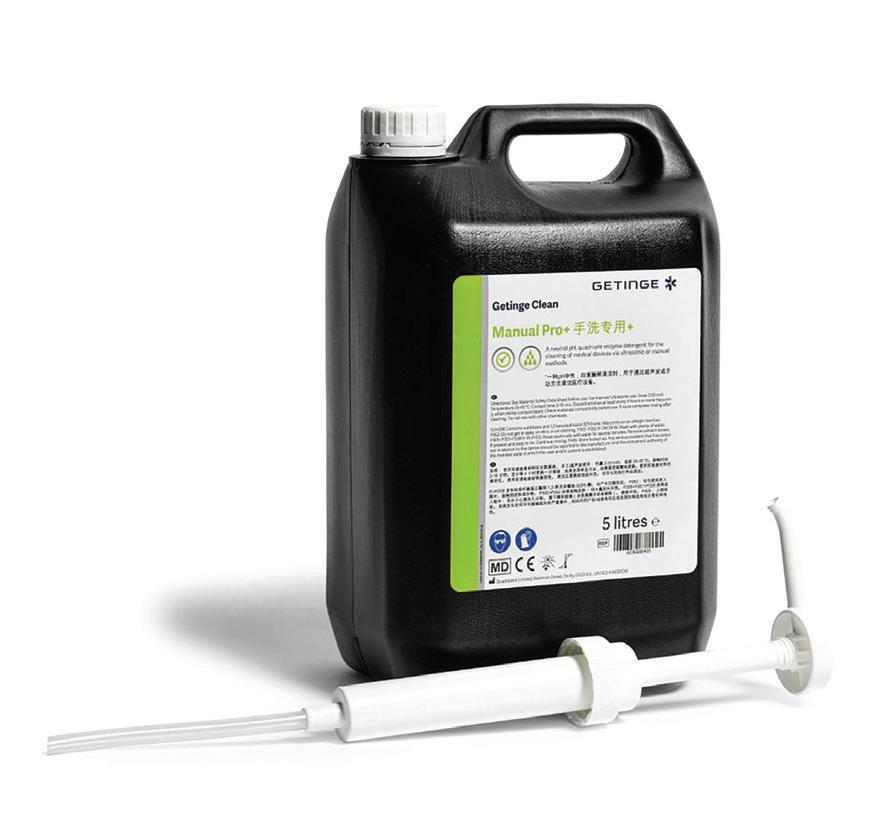
























Hello, and welcome to the February Edition of Supplyline. In this edition there are several updates relating to Standards, Sterilising Technology Course Sponsorships and this year’s NZSSA Annual Conference, which is being held at Te Papa in Wellington. There are reports from both Shelagh Thomas and Alison Stewart who both attended the WFHSS World Congress late last year in Barcelona, Spain.
We have had a rough time over the last few weeks, storms and cyclones have certainly been a key factor in many people’s lives. For those of you that live in the affected areas, I hope that you and yours are all well and safe.
Just a reminder that it is the NZSSA’s anniversary in April of this year. This will be the 49th Anniversary for the NZSSA. Next year is our 50th Anniversary and we are already planning how we as a professional group can celebrate this achievement.
Please enjoy this edition of Supplyline. I have included the dates for when information needs to be with me for inclusion into Supplyline. I would love to see pictures of sterilising units and the staff that work in them and I’m happy to include them in Supplyline. If there is anything that you would like to see in Supplyline in the future,
Hello everyone and welcome to the first edition of Supply line for 2023. We are now in February and I am quite unsure where January went. I worked right through the holiday season therefore time became a bit of a blur.
For me it appears that we are surrounded by chaos in the workplace. For some time there has been no structure to our daily workloads resulting in a feeling of one step forward and three steps back. Like many of your workplaces we come in on a daily basis to a shortage of beds, shortage of staff and high acute case numbers, resulting in cancellations of elective cases. How many of you like me wish you could go back to pre- coved times when we had structure to our day.
In November 2023 Alison Stewart and I attended the WFHSS congress in Barcelona, Spain. You can read about it in this edition of Supplyline. Additionally there is an excellent poem written by member of the CSSD team from Middlemore. If you or any of your team can come up with great ideas like this I would love for you to send them in for Supplyline.
We care for each other, showing kindness and empathy in all that we do.
AUAHA
We are committed to finding future focused solutions and take personal responsibility to be better every day.
Our diversity is our strength, we back each other and work together in partnership.
We are committed to doing the right thing by ensuring equity and hauora are at the heart of everything we do.
please let me know.
Take care everyone and stay safe, Ngā
Aileen Derby Editor NZSSA Supplyline
Friday 17th February will see the executive team come together for a face to face meeting to plan out the year ahead. We will also be meeting with the team from Pharmac who want to discuss how the NZSSA can be involved in procurement of devices and what advice we can offer them.
For those of you employed by Te Whatu Ora please ensure that your quality management systems are up to date and that you are up to date with audit requirements against the standard. Auditing of our departments will happen this year, so please be sure that you are ready.
Best wishes to all
Shelagh Thomasmihi
In early November 2022 I had the honour of being able to travel to Barcelona Spain to attend the WFHSS Conference.

For those who are unaware the WFHSS (world federation for hospital and sterile sciences) is the world body for sterile sciences of which the NZSSA is a member. It is run in a similar fashion to the NZSSA, however it covers 78 member groups from 70 countries around the world. Some countries like China, India, Canada, Netherlands have more than one association therefore are represented twice. You can find out what is happening around the world at the WFHSS by logging in to their website.
The conference itself was held in the Palau De Congressos Fira Montjuic. This was a very large building surrounded by numerous historical buildings.
The conference was held over two and a half days. It commenced with the opening ceremony on a Wednesday evening and finished on Saturday lunchtime. Prior to the opening of the conference on the Wednesday evening I attended the AGM of the WFHSS and was accompanied to this by Alison Stewart. The process of the meeting is very similar to our own but with a lot more nationalities in attendance. I was proud that the we, the NZ contingent were not slow in coming forward and stating our opinion when we did not agree with what was being said from other members in attendance.
The opening ceremony consisted of welcome speeches and was followed by entertainment from Spanish local Catalan dancers.
Most of the well-known trade partners were exhibiting at the conference and there were approximately 1500 attendees.
There were not as many new innovative products than what I had expected to see. However one product did catch my attention. It is called BICARmed and is a cleaning technology using sodium bicarbonate. It is used in a high tech cleaning box. The sodium bicarbonate in granules is combined with compressed air through a hand piece which uniformly and continuously strikes the surface of the instrument. Dirt is removed from the most complex instruments and via second hand piece the instrument can be rinsed. This system replaces manual and ultrasound cleaning prior to using a washer disinfector. I can see that this system or similar could be the way of the future doing away with utilising chemicals
in the hand washing and pre cleaning process. Safer for the environment and safer for staff.
There were of course numerous presenters and mostly everything was presented in English. At times some presentations appeared familiar as if they were an extension of papers presented at previous conferences by the same presenters.
Many of the presentations were based around inspecting instruments with lumens and quality management in the CSSD
One presenter who stood out for me was Dr Sulisti Holmes from the National Health Service Scotland. She is the type of presenter I wish I could be. She does not use very many slides but presents using body language and expressions, humour and some stage props. This year there were several references to Elvis Presley. Humour aside her presentation resonated with me and issues I have currently been having with one of the companies over contaminated instruments.
Her topic was titled ”Investigation of the Release of Particles during Phacoemulsion Procedures.” Sulisti described an investigation she undertook following a string of post-surgical infections in patients who had undergone eye surgery. Included in this group was her
elderly mother. The automatic first response from many was that it must have been caused by CSSD who were not cleaning the instruments correctly. Sulisti went to great lengths to demonstrate that the phaco hand pieces were been cleaned per MIFU. She contacted the hand piece company and they were adamant that it was nothing to do with their equipment or MIFU and it must have been the fault of CSSD and their cleaning processes. Sulisti is Scottish however is of Chinese descent. She is dogged when it comes to investigating anything. She then had one of the hand pieces cut in half and it was found that there were bits of plastic stuck in inaccessible parts of the hand piece where cleaning could not possibly occur. Still the company denied responsibility. She had numerous rounds of biological testing completed and it was found that some of the plastic that was causing issues came from the hand piece itself and there was also evidence of green particles from the table drape stuck inside inaccessible parts of the hand piece. This would have occurred if the hand piece was laid on the drape covering the patient or on the scrub trolley. The outcome of all the investigation was that the company had to concede that their product and MIFU needed to be reviewed. For Sulisti and her team the investigation paid off.
For me the message I took away is that we as sterile
technicians and experts in our field need to be strong and question and confront the companies who always state that it must be our processes that are at fault. We need to stand up to theatre staff who blame CSSD. We need to know our products and how they work and question the companies on how they can see an item being cleaned in all the inaccessible parts. As sterile technicians we also need to be part of the purchasing team when surgeons and theatre staff want buy new equipment. As per the standard.
Apart from the amazing speakers the congress dinner was a special treat. It was held in the corporate areas of FC Barcelona Football team at Camp Nou. Hundreds of photos were taken by everyone that night.

This year the conference will be held in Belgium and hopefully we the NZSSA may be able to offer a scholarship for a diploma student to attend. Watch this space.


Post Script- I have discovered that batman is alive and well and the Bat cave is in the La Sagrada Familia in Barcelona.

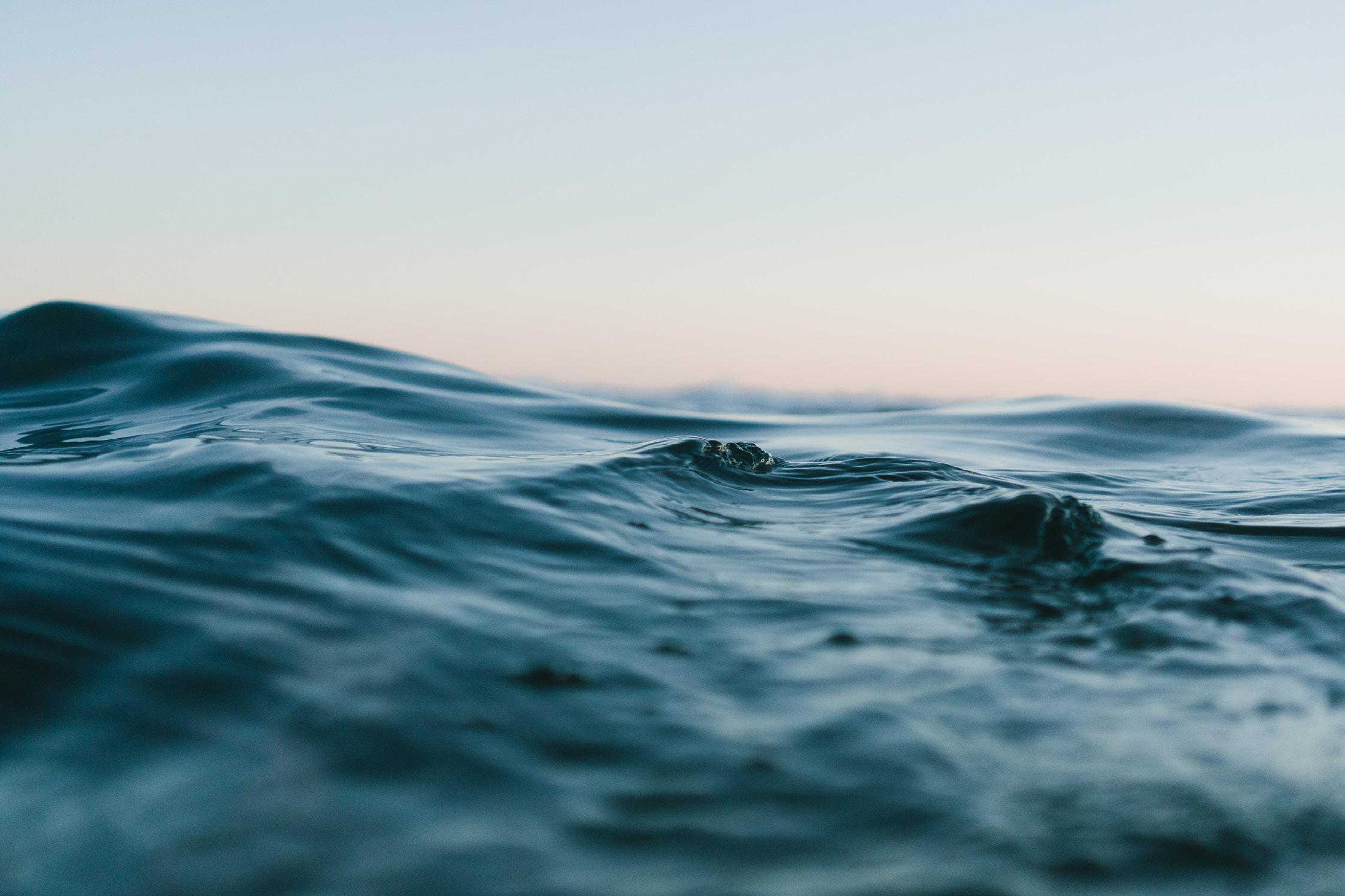
NEVER HAVE I EVER
ZOOMED THROUGH A WORKING DAY WITHOUT
STERILISATION BEING APART OF MY DAY
SHOULD YOU EVER ASK TO STERRAD MY DAY
AIR FILTERS WOULD NOT HELP IN ANYWAY
SURELY BY NOW YOU KNOW I'M BEYOND KEEPING IT LOW TEMPERED, EVEN TRIED TO
ULTRASONIC IT ALL AWAY
PUSHING PAST THIS CRAZY DAY
PEOPLE CAN MAKE MY DAY BUT Y? BECAUSE IT KEEPS MENOPAUSE AWAY LOLLIES ARE THE BEST WAY
LINE UP LINE UP
IN EVERY WORKING DAY THERE IS
NEVER ENDING NEUTRALISER TO COUNTERBALANCE
EVERY GOOD AND BAD DAY
Conference.
6th – 8th September 2023
To be held at Te Papa, Wellington.

Conference Theme: Changing Landscape.

This will require several changes and updates to some of our guidelines and processes which affect sterile technicians, e.g. –we are required to have a complaints process, the scope of practice and competencies will be updated and the registration process which is a requirement of self-regulation shall be more robust.
As a first step in the process the NZSSA executive has agreed to make an amendment to the registration process. There has long been confusion between membership of the NZSSA and registration with the NZSSA.
Membership is belonging to an association and the fees associated with this are mandated within various union agreements. This means that the employer has agreed to pay this membership or reimburse you for this upon presentation of a receipt proving payment.
Registration is generally the term used when you pay a fee to a professional body and are issued with a licence to practise e.g. nursing Council registration.
As sterile technicians are not paying for a licence to practice, it has been decided to amend the title.
From July 2023 qualified sterile technicians shall be
5369 –Reprocessing of reusable medical devices and other devices in health and non-health related facilities
NZS 8134:2021 Ngā paerewa New Zealand health & disability service standards
Combining AS/NZS 4187 & AS/ NZS 4815 standards. Committee currently reviewing public comments
required to submit a PDRP (Professional Development Recognition Portfolio). This aligns with the requirements of other Allied Health Scientific and Technical Professions. The PDRP will now be submitted for review every three (3) years again in line with other groups. At this stage only the name has changed from registration to PDRP. The content remains the same.
For the next twelve to eighteen months it is envisaged that there will be only one level of PDRP for all Sterile Technicians including supervisors and managers. Following on from that it is hoped that there will be approx. 3 levels of PDRP e.g. competent, proficient and senior (for team leaders and managers). The details and titles of these levels are still to be worked out.
It is hoped that the NZSSA can have a productive discussion with the unions involved with our members to have them consider having a payment available within MECA’s for achieved PDRP’s similar to that of nursing and anaesthetic technicians. However the level of work produced for PDRP’s will have to be quite substantial.
If you have any questions re the changes please do not hesitate to contact a member of the NZSSA executive for assistance.
Shelagh Thomas President NZSSAPublication date to be confirmed
Final editing process underway before next public comment period
Until AS 5369 is published continue to refer to AS/NZS 4187 and AS/NZS 4815 as they are the current best practice standards.
This standard supersedes the previous 2008 suite of standards and came into effect on 28 February 2022.
The new standard is now available via Standards NZ: https:// www.standards.govt.nz/ search/doSearch?Search=8134
Infection Prevention & Control in Endoscopy
2021
These guidelines supercede the previous editions of GENCA Infection prevention guidelines pertaining to endoscopy.
The guidelines have been made available by GESA: https:// www.gesa.org.au/education/ clinical-information/
Services should be completing audit to identify the gaps in how they comply with this standard.
The document is available for download and services should audit how well they align with the guidelines.
Note: The new standard will be referencing more ISO standards that have come into use since 2014.
The NZSSA has committed itself to becoming a self-regulated profession hopefully within the next two years.
JournalofCleanerProduction322(2021)129121

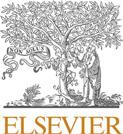
B. van Straten a, * , D.R. van der Heiden a , D. Robertson a , C. Riekwel b , F.W. Jansen a, c , M. van der Elst a, d , T. Horeman a
a Delft University of Technology, Department of BioMechanical Engineering, Mekelweg 2, 2628 CD, Delft, the Netherlands
b Maasstad Hospital, Maasstadweg 21, 3079 DZ, Rotterdam, the Netherlands
c Leiden University Medical Center, Leiden, the Netherlands
d Reinier de Graaf Gasthuis Hospital, Delft, the Netherlands
ARTICLE INFO
Handling editorMingzhou Jin
Keywords:
Cleaner production
Circular economy
Waste recycling
Recyclability
Efficiency increase
ABSTRACT
Introduction: Hospitals in the Netherlands generate approximately 1.3 million kg of waste from the polypropylene (PP) wrapping paper (WP) used to wrap surgical instruments each year. The aim of this study was to develop a method to recycle WP waste into new medical devices.
Methods: WP was recovered from Maasstad Hospital, Netherlands. The WP was melted into bars, granulated, and mixed with virgin material at different ratios and temperatures. Dog bones were injection-molded from volume (v.%) virgin, mixed (%R), and recycled (100%R) granulate, and a tensile testing machine was used to compare the material properties before and after ten disinfection cycles at the sterilization department. Then, 25 instrument openers were made from the 50%R material and circulated for four weeks.
Results: The data indicated no significant differences in the mechanical properties at different melting temperatures. For dog bones made from the 100%R, 50%R, and virgin granulate, the Young’s moduli were 1021 (SD13), 879 (SD13), and 795 (SD14) MPa, and the strains were 8%, 12%, and 14%. Ten disinfection cycles did not significantly change the material properties. After one month, the openers did not show any deterioration or damage other than surface scratches.
Discussion: The results indicated that the initial WP melting temperature did not influence the mechanical properties. Although devices could be produced directly from the recycled WP granulate, increasing the recycled granulate in the mix ratio increased the strength and brittleness.
Conclusions: It is feasible to recycle WP waste into a high-quality raw material for the injection molding of medical devices without using additives. This would allow hospitals to become more compliant with the circular economy enabling economically viable and circular processes that positively contribute to cleaner technical processes, sustainable products, and the reduction of medical waste.
Urban mining is the process of harvesting materials directly from used products, buildings, or waste, as opposed to geological mining, where virgin materials are extracted from ore that is mined from the earth. The objective of urban mining is to decrease the high environmental impact caused by the extraction and processing of virgin materials in local urban areas (Muller et al., 2019).
Because a hospital is seen as an urban environment, the recovery and
recycling of operating room (OR) waste into raw materials is considered to be urban mining (Zhu and Xuan, 2014). From the perspective of urban mining, hospitals could be a good source for raw material extraction because many of the supplies used in hospitals are often made from high-quality materials and are single-use items.
Interest in the reuse or recycling of medical waste is growing globally (Van Straten et al., 2020; Pinjing et al., 2013). There are several motivations for reducing medical waste. First, it may contribute to a decrease in the dependency on natural resources and an increase in the
* Corresponding author. Department: Department of BioMechanical Engineering Institution: Delft University of Technology, Mekelweg 2, Building 34, 2628 CD, Delft, the Netherlands.
E-mail address: b.j.vanstraten@tudelft.nl (B. van Straten).

https://doi.org/10.1016/j.jclepro.2021.129121
Received 21 June 2021; Received in revised form 11 August 2021; Accepted 19 September 2021
Availableonline23September2021
0959-6526/©2021TheAuthors.PublishedbyElsevierLtd.ThisisanopenaccessarticleundertheCCBYlicense(http://creativecommons.org/licenses/by/4.0/).
availability of medical products in times of scarcity. Several studies have revealed the benefits of reprocessing medical products in times of scarcity (De Man et al., 2020), as well as using alternative materials (Teesing et al., 2020) and reusing filtering facepiece respirators (Harskamp et al., 2020). Second, there are arguments that waste decreasing and recycling activities may not only have environmental benefits but also generate potential financial gains for hospitals (Van Straten et al., 2020; Voudrias, 2018). Third, medical waste has a negative impact on public health, as well as on the environment. It appears that the public does not sufficiently understand medical waste management (Yong et al., 2009), and hospitals seem to manage their medical waste in different ways (Bokhoree et al., 2014) where protective measures should be taken (Zhang et al., 2013). Medical waste is not only a potential threat to employees and patients, but also to surrounding communities (Mesfin et al., 2020). Therefore, medical waste remains problematic (Çetinkaya et al., 2020). Because medical waste can spread diseases (Irianti and Sri, 2013), there is a need to switch to sustainable alternatives (Patricio Silva et al., 2020). It is important to decrease the volume of medical waste to reduce these hazardous effects. Some studies have reported an increase in medical and plastic waste of up to 30% as a result of the Covid-19 pandemic (Patricio Silva et al., 2020; Sutrisno et al., 2020).
As the volume of medical waste has grown (Razali et al., 2010; Manga et al., 2011; Haque et al., 2020), so has the public concern regarding the disposal of this waste (Pullishery et al., 2016; Chudasama et al., 2014). Awareness among hospital staff is highly important and needed (Pinto et al., 2014), especially in the case of sharp medical waste (Ghodrat et al., 2017). In addition to public concerns, because of increasing waste disposal costs, decreasing medical waste could potentially lead to hospital cost savings (Van Straten et al., 2020; Berwick et al., 2012), which could be substantial (Zimmer et al., 2008). Earlier studies reported the possibility of recycling medical materials such as blue (and green) wrapping paper (WP), which is used to pack surgical instrument trays after sterilization to enable transport and storage (Voudrias, 2018; Babu, 2018). The OR is considered to be a large contributor to medical waste (Chang et al., 2020; Stall et al., 2013), which includes wasted energy, water (Wormer et al., 2013), and solid materials (Shinn et al., 2017), and in some cases, it is the largest contributor to the total waste of a hospital (Rigante et al., 2017; Albert et al., 2015). Approximately 30% of all hospital waste is plastic, 30% is cardboard and paper (Lee et al., 2002), and approximately 20% comes from ORs.
The use of WP seems to be a large contributor to waste production because it is used in every type of surgical procedure. WP is used to wrap an instrument tray with surgical instruments. The WP forms a sterile barrier around the tray, allowing the instruments to remain sterile.
WP is made from non-woven polypropylene (PP), which is a thermoplastic polymer, and has a high recycling potential [8]. PP is widely used in many products and is found in many industrial applications (Ajorloo et al., 2020). The automotive sector is a large user of PP-based composites because of their suitable mechanical properties such as their low density and chemical resistance (Wang et al., 2019).
Two aspects should be considered when recycling medical grade PP.
1) Additives: The polymeric materials used in injection molding may be combined with additives, fillers, and/or reinforcements to improve the mechanical properties and color of the polymer or to reduce costs (Suplicz et al., 2020). Reinforcements can be used to enhance the strength or rigidity of plastics by mixing the polymer materials with additives or fillers. These materials such as glass fibers are used to create mechanical bonding between the fibers and the polymer matrix. Other additives and fillers help to create a specific melt flow index; however, the addition of these additives can modify the mechanical behavior of the recycled PP (Jmal et al., 2018).
2) Material degradation: The other aspect is the potential degradation of the recycled material. Several studies have reported changes in the
material properties as a result of recycling. The elastic modulus and complex viscosity of recycled PP may decrease with the number of reprocessing cycles. Several studies have shown that recycling at high temperatures can lead to thermo-mechanical degradation (Wang et al., 2019; Spicker et al., 2019). Moreover, it has been reported that during recycling, the material properties of PP change as a result of chain scission and an increase in crystallinity (Aurrekoetxea et al., 2001; Hyie et al., 2020).
Although several studies have focused on the recycling of PP (Aurrekoetxea et al., 2001; Hyie et al., 2020), no studies have been conducted on recycling WP waste from the OR into injection-molded products without using additives.
The main objective of this work was to experimentally determine if a standardized approach is possible for the collection, melting, and granulating of WP waste for use in injection molding to produce new medical products. These products are then used in a hospital, creating a circular loop as shown in Fig. 1
To investigate the versatility of PP WP waste, it was necessary to determine and compare the mechanical properties of the molded WP waste material when mixed with virgin materials, as this is commonly seen in recycled products. Finally, this study investigated how debris like stickers and tape would influence the injection molding process. The following research questions were formulated for this study. Research questions.
1. Does the melting temperature influence the properties of reprocessed WP waste material?
2. Does mixing virgin and recycled PP alter the mechanical properties?
3. Does commonly seen debris such as stickers and tape influence the properties of the reprocessed WP waste?
4. Can the material be used to make new reusable medical products without adding additives to the process?
2.
This study involved eight steps to analyze whether WP waste could be used to fabricate a medical device with sufficient mechanical properties to be used again in a hospital environment. Different steps were used to answer the research questions and included setting up a legally approved logistical process, determining the best melting temperature for WP waste, developing a melting process, setting up an injection molding process, analyzing the material properties after molding, analyzing the influence of debris such as stickers and tape embedded in the WP waste, and designing a process for using the new medical device in the hospital.
This research included the collection of three batches of PP surgical WP from an OR where the WP was used to wrap instrument sets. These batches were recovered over three separate days. A procedure was designed to collect the WP after use, after which a melting process was used to recycle the plastic waste at different melting temperatures. Different methods were evaluated to determine whether discarded medical grade WP could be mined using a standardized process and used for the injection molding of new medical products.
A dedicated logistical process was set up to collect WP waste at the Maasstad Hospital (Rotterdam, the Netherlands). This type of surgical waste is categorized as medical waste and is subject to legislation for hazardous and medical waste when transported and processed. The OR staff was asked to collect WP at the OR in the preoperative preparation area. This is the area where surgical instrument sets are prepared for surgery. Transparent 160 L PP collection bags were used, in which the WP was collected. The bags were transported from the OR to the waste collection center of the hospital. The bags were collected by a waste
processing company (Renewi Nederland B.V., Eindhoven, the Netherlands). The WP waste was analyzed and weighed after collection. As required by the permit for the transport of medical waste, the WP waste was first transported to a central sterile services department (CSSD) location (CSA Services, Utrecht, the Netherlands), where it was sorted and checked for potential contamination and the presence of other undesired debris. The WP waste was then brought to the Delft University of Technology (Delft, the Netherlands) to be melted.


To determine the influence of the melting temperature of the WP waste, the WP was first melted at 200 ◦ C, 250 ◦ C, and 300 ◦ C. A tubular shape was selected because it was easy to manufacture and fit well inside the cylindrical oven. The PP WP waste was melted into bars after placing it into a tubular-shaped cylinder with a diameter of 100 mm, which was capped at each side and placed in the oven (Fig. 2). The melting temperature that produced the best properties was evaluated and used for melting the next batches.
The WP was collected and melted in a stainless-steel cylinder in an electrical melting oven (KOS, Electric crucible, series 219029). The WP sheets were manually placed into cylinders and melted at 250 ◦ C. After the material was melted, the molten material was pulled through the filter by gravity. The melted PP bars were granulated using a Moditec grinding mill (Gplus 2) and used for direct injection molding at 200 ◦ C. The virgin granulate was mixed with recycled PP by volume before injection molding (indicated as %R). The dog bones and rectangular bars needed for tensile testing were made from 25%R, 50%R, and 75%R PP. These were compared with each other and with dog bones made from virgin PP and 100%R PP.
Two different molds were made and used for the injection molding (Babyplast, injection molding machine 6/10P). The mold with the dog bone design shown in Fig. 3 was used to make dog bones with different
qualities for tensile testing (Supplemental file 1). A second mold was used for a medical product, an instrument opener. It had the form of a cross and was designed to keep double-hinged instruments open during washing and disinfection in a decontamination machine at the CSSD to ensure that all the parts of the instruments were cleaned during washing. A circular loop could be created by the urban mining, recycling, and injection molding of WP to fabricate new products and bring the material back into circulation in a hospital.
2.5. Material properties of 100% reprocessed WP waste and when mixed with virgin material
For analysis and strength comparison purposes, six different sets of five dog bones each were made from PP that was melted at 250 ◦ C and used for injection molding at different mix ratios at 200 ◦ C.
Six sets of five dog bones with various mixing ratios.
1. 100% virgin PP as the benchmark (virgin)
2. 25% recycled PP WP mixed with 75% virgin PP (25%R)
3. 50% recycled PP WP mixed with 50% virgin PP (50%R)
4. 75% recycled PP WP mixed with 25% virgin PP (75%R)
5. 100% recycled PP WP (100%R)
6. 100% recycled PP WP, polluted with stickers and tape (polluted)
The melting and injection molding parameters used with the collected PP WP are shown in Supplemental File 2.
2.6. Influence of stickers and tape on properties of reprocessed WP waste
Paper and other waste such as stickers can enter the WP reprocessing process and pollute the PP end product. This pollution not only influences the material properties but also clogs or damages the melting oven or delicate injection molding machines. A worst-case scenario was included in the experiments by taking the concentrated residue material from the filter after an unsorted batch of WP waste was processed in the melting oven. This residual material, which consisted of approximately of 50 v% pollution, was granulated and used to create five dog bones for tensile and Shore D hardness testing.
Tensile strength tests were conducted to analyze the mechanical properties of the dog bones composed of the recycled PP because obtaining acceptable properties is seen as a challenge when PP waste contains different kinds of plastics such as tape and stickers, or when it is mixed with other types of materials (Hyie et al., 2020). The Young’s

modulus (E) was analyzed by measuring the elastic behavior (relationship between the tension and axial strain: E = σ ε ). The ductility of the material was analyzed by measuring the elongation at break as a percentage by comparing the new length after the breakage of the dog bone and the initial length. The ultimate yield strength was measured to show the maximum tensile stress of the material, and the Shore D test was used to measure the hardness of the dog bone. The combined stress–strain relationships of the dog bones were compared, which were measured using a tensile bench (Delft University of Technology, Faculty of Mechanical Engineering, Zwick Roell, Zwick GmbH & Co.KG, Ulm, Germany), as shown in Fig. 3
The dog bone bars had shoulders at both ends. These shoulder ends enabled a solid grip when placed in the testing machine. The dog bones were also tested on both shoulder ends with a shore durometer (Sauter, HBD 100–0.HBD 100–0, Durometer, www.sauter.eu), which was used to measure the hardness of the recycled material.
2.8. New products made from WP
To determine whether products made from the WP granulate could withstand a cleaning and disinfection process at the CSSD, additional tests were required. To determine whether multiple CSSD cleaning cycles would influence the material properties, dog bones made from virgin, 50%R, and 100%R were tested before and after being cleaned and disinfected ten times in a Getinge G1-WA-04 thermal disinfector (Getinge. Lindholmspiren 7, SE-417 56 Gothenburg, Sweden) at the CSSD. Thereafter, an instrument opener was designed to keep doublehinged instruments open during washing and disinfection. To determine the maximum load on the instrument opener, multiple doublehinge bone cutters were compared and tested by adding masses to a cable that ran through the opening of the hinge (Fig. 4). The 2 mm cable made contact with the metal of the hinge at the same location as the opener. The load was increased in 0.5 kg steps until the hinge remained open under the applied total load, which was defined as Fmax. A virtual finite element method (FEM) analysis was conducted using Solidworks (2020, Dassault Syst` emes). The analysis was performed to relate the ultimate tensile strength (UTS) of the measurement outcomes to the dimensions and shape of the instrument opener when loaded with Fmax. This analysis showed the relationship between the design parameters and the material properties of the chosen granulate. Fig. 8 shows how the CAD model was imported and simplified, with half of the cross used in the analysis.
One thousand instrument openers were injection molded using 50% R and 100%R granulate, which should have survived at least ten CSSD disinfection cycles in a thermal disinfector at 90 ◦ C. The Expert Sterile Medical Devices (DSMH) of the hospital was asked to supervise the
implementation of 25 instrument openers (50%R) and to inspect each instrument opener before, during, and after the disinfection phase. CSSD user and DSMH feedback was requested four weeks after the introduction of the instrument opener at the CSSD of Maasstad Hospital.
The WP was used to package instrument sets after cleaning and sterilization in the CSSD. The WP protected the instruments by creating a sterile barrier after steam sterilization at 134 ◦ C. The collected paper was unwrapped at the OR and did not come into contact with the patients. The Halyard brand WP (12754 Halyard, Kimguard, One Step, H100) was discarded after use in the OR and collected into special PP transparent bags. The OR staff did not report any difficulties while collecting the WP. A total of 8.16 kg, divided over 17 transparent bags, was collected. The majority consisted of H400 114 × 114 WP, with each sheet weighing 160 g and 5
6 sheets in each bag. The bags were transported in a roll container from the OR to the logistical area of the hospital, where they were collected and transported by the waste processor Renewi. After arrival, the WP was manually placed in cylinders and melted into bars, after which it was granulated and used for injection molding.
After melting, the PP bars were removed from the cylinders. The bars were granulated into flakes to form a raw material for injection molding.
Fig. 6 shows pictures of the dog bones that were injection molded. For clarification, the structure of the polluted dog bone was enlarged 5 times, and the contrast was enhanced to better expose the particles.
During injection molding, when the nozzle temperature was 200 ◦ C, all the input materials flowed well, and no problems were observed during the injection molding with any of the dog bones and instrument openers. The results of the tensile tests are shown in Fig. 5. The dog bones shown from left to right were made out of 100% recycled WP melted at 200, 250, and 300 ◦ C. No significant differences were found between the dog bones produced at different initial temperatures of the melting tube. Because the initial melting temperature of 250 ◦ C seemed to give the best results, the following WP batches of granulate were made from WP melted at 250 ◦ C.

Fig. 6 shows the results for the polluted scenario, virgin PP, and different mix ratios. With the exception of the polluted dog bone, the UTS values were all greater than 30 MPa. The UTS increased from 31.5 MPa for the virgin material to 36.5 MPa for 100%R. The dog bones made out of 100%R granulate showed an approximately 6% lower strain than the virgin PP. The strain at break decreased with a decrease in the amount of virgin material in the dog bones. The results showed that

mixing recycled PP with virgin PP increased the strain, depending on the mixing ratio, with a maximum of 5%. Fig. 6 (right) shows the material hardness, measured in Shore D values in combination with the Young’s modulus. The bars indicate that the tensile stiffness and hardness increased when the material mix contained more recycled PP. The polluted and 100%R dog bones showed similar tensile stiffness and hardness values.
For dog bones made from the 100%R and 50%R mixes, the Young’s modulus values were 1021 (SD13) and 879 (SD13) MPa, respectively. The average strains for the 100%R and 50%R mixes were 8% (SD2) and 12% (SD4), respectively. Dog bones made from virgin PP showed an average Young’s modulus of 795 MPa (SD14) and strain of 14% (SD0.5). The injection-molded instrument opener was subjected to ten washing and disinfection process cycles, and a visual inspection showed no deterioration.
The tensile test conducted on the dog bones that were injection molded with particles from the stickers and tape in the granulate, as a worst-case scenario, showed a strain of 6% (SD1) and UTS of 29.8 (SD1.4) MPa.
The results of the tensile and Shore D tests of the dog bones made of virgin, 50%R, and 100%R, which were washed and disinfected for ten cycles in the CSSD (Supplemental File 3) are presented in Fig. 7

Compared to the data in Fig. 7, the virgin PP showed an increase in elongation of 0.7%, an increase in UTS of 1.9%, and a decrease in hardness of 2.86%. The 50%R showed a decrease of 1.8% in elongation, an increase in UTS of 0.9%, and a decrease in hardness of 1.85%. The 100%R showed an increase in elongation of 1.7% after ten disinfection cycles, with a decrease in UTS of 0.69% and no change in hardness.

Experiments indicated that a 6 kg load was sufficient to keep the hinge of the heaviest bone cutter open. As shown in Fig. 8, within the model, the highest stresses were found at the center of the cross of the opener, with a maximum compression stress of 59.8 MPa and tensile stress of 20.4 MPa for virgin material, a maximum compression stress of 59.7 MPa and tensile stress of 20.5 MPa for 50%R, and a maximum compression stress of 59.5 MPa and tensile stress of 20.7 MPa for 100% R. To prevent damage due to high contact forces during insertion, the instrument openers were designed with curved edges to ensure that the forces were distributed more equally.
Fig. 8 shows the molded instrument opener design that was used to open hinged spreaders and bone cutting forceps of different sizes. None of the 25 openers suffered damage during the testing period. The following statements show some of the user feedback from the CSSD staff after one month of repeated use: it is easy to use and straightforward to apply to an instrument; it has an improved design compared to the current openers that are used from a local retail store (these products are not medically validated and appear to leave white debris behind after use in the thermo disinfector); the instrument opener is better to hold in your hands and
to place inside the hinge; the instrument holder is made of recycled material, which is perceived as an advantage; it effectively keeps the instrument open during washing.
For the first time, medical devices made out of recycled PP hospital waste were used in the harsh environment of the sterilization department of that hospital. The results showed that the study aim was reached, and it was possible to process PP waste into new qualitative products that could be used in the same hospital without the use of additives. The initial melting temperatures of 200–300 ◦ C applied to turn the blue WP waste into bars for granulation did not significantly influence the properties of the injection-molded products. An initial melting temperature of 250 ◦ C combined with an injection molding temperature of 200 ◦ C resulted in satisfactory results. Other studies have reported that the melting temperature of recycled PP has a significant negative effect on the stress at break, with the addition of virgin material compensating for this effect (Czichos and Saito, 2006; Da Costa et al., 2007). However, this study found that for the initial melting step before injection molding, temperature differences between 200 ◦ C and 300 ◦ C did not significantly influence the properties of the final product. From Fig. 6, it can be concluded that the mixing ratio of virgin material to recycled granulate had a strong influence on the material properties. Injection-molded products made from 100% recycled WP were stiffer, harder, and more brittle than those made from 100% virgin PP. The degradation of the material could be reduced by adding virgin material to the recycled PP (Gabriel and Tiana, 2020). However, the increased stiffness and hardness could be an advantage for supportive devices at the CSSD where instruments are heavy and sharp, detergents are used, handling is rough, and washing is done with a high water flow at high pressure.
A comparison of the results for the 25%R and 100%R samples showed that with 25%R granulate the strain at break was 5% higher, while the UTS was 11% lower. These results showed that the mixing
ratio had a stronger influence on the strain at break than on the UTS. In the worst-case scenario simulation, melted WP waste contaminated with stickers and labels was granulated into flakes that were immediately used in injection molding to produce dog bone samples. Although highly polluted, it was found that the strain was only 8% lower than that of virgin PP and 2% lower than that of pure 100%R PP, whereas the UTS was 5% lower than that of virgin PP and 18% lower than that of pure 100%R PP. This showed that pollution with tape and stickers had a limited effect on the mechanical properties. In this case, the color of the molded material changed.
4.1. Potential to make new products without adding additives to process
The FEM simulations indicated that despite the different characteristics of the mixed materials, the difference in the maximal allowable stresses remained low under equal loading conditions. This showed that for simple non-constructive designs that are not deformed during use, manufacturers can safely mix virgin and 100%R granulate depending on the availability and wishes of their clients. In practice, it was found that the instrument openers made from 100% PP and 50%R PP both met the specifications for holding hinged instruments in an open position for multiple disinfection cycles. However, the data indicated that extra attention is needed with respect to device designs containing deformable compliant elements (e.g., snap fingers) because the material becomes more brittle (Hyie et al., 2020; Czichos et al., 2006), with the break properties decreasing (Da Costa et al., 2007) leading to a potential decrease in the mechanical properties (Gabriel and Tiana, 2020; Aurrekoetxea et al., 2001) after multiple cycles of recycling. This indicated that in order to increase the circular use of recycled medical plastics, design choices should be linked to the type of waste and mixing ratio. This could be a basis for developing more medical products manufactured from medical plastic waste such as PP trays, mesh basket accessories, and labels, considering the costs and potential environmental impacts of such products. Every medical product needs to undergo CE approval according to the Medical Device Regulation. Testing is

mandatory, and material specifications must be demonstrated in technical files. This includes toxicity testing of the material, which may exclude the toxicity of potential pollutants and unknown substances during recycling, demonstrating that products made out of waste can be safely used in hospitals.
Within the Netherlands, an estimated 1.3 million kg of WP is used each year. Potentially, 8,320,000 cross-shaped openers could be manufactured when collecting WP waste for only one year (Supplemental File 4). Hypothetically, 70,000 instruments with a (double) hinge are circulate in 90 hospitals in the Netherlands. To put this into context, this means that recovering WP waste during a single year would ensure a raw material supply for the manufacturing of instrument openers for the next 119 years in the Netherlands. The urban mining of WP waste could be the answer to the circular manufacturing of a wide range of medical devices. These could include medical products such as cleaning nozzles, tubes, holders, and containers to be used in CSSDs or ORs and manufactured from recycled PP.
This study demonstrated that an OR waste reprocessing method could be conducted locally with potential environmental benefits. The theoretical implications are that the material properties of processed waste could be examined in a standardized manner with dog bones before using the obtained material properties to conduct loading simulations on a new instrument design. The linear relationship between the percentage of recycled material used and the hardness or strength could be used to calculate the mechanical properties of the final product. This characterization of waste material properties would allow designers in practical applications to optimize their products based on the “green” wishes of customers. They would not only need to design future medical products to facilitate easier reprocessing but would also need to consider the fact that recycled materials are used in the design.
As this study demonstrated the feasibility of reprocessing PP waste from hospitals into new medical products, future studies should investigate the reprocessing options for other types of plastic hospital waste, as well as calculating the environmental and financial impacts from a more holistic point of view.
Although not included in the scope of this study, a Life Cycle Assessment (LCA) study could be conducted to calculate the benefits of the environmental impact, in particular the CO2 and water impacts, when recycling WP into new products, as compared to its disposal or incineration. In addition, a cost analysis of the urban mining, recycling, manufacturing, and reuse of PP from medical devices, as opposed to disposal after a single use, would be an area of interest for further investigation. However, consideration should be given to the fact that a special logistical routing is needed for this type of waste because it is potentially contaminated, generating extra costs for comparison. In the pilot study, some openers were reused more than 10 times without damage. Because the exact number is unknown, a future study should relate the impact on the material properties of more than ten disinfection cycles, as well as the effect of autoclave sterilization.
In this study, Maasstad Hospital became the raw material supplier for its products. The results of this study demonstrated that recycling WP waste into new medical products is feasible. Despite becoming more brittle, the strength and hardness of the recycled PP WP increased, making it even more suitable for use in the specific harsh environment of the CSSD. It was demonstrated that the proposed WP reprocessing method could be conducted locally, reducing waste generation, with
potential environmental benefits. This would allow hospitals to become more compliant with the circular economy using circular product lines.
B. van Straten: Conceptualization, Methodology, Writing – original draft, Project administration. D.R. van der Heiden: Data curation. D. Robertson: Investigation, Writing – review & editing. C. Riekwel: Investigation, Resources. F.W. Jansen: Writing – review & editing, Validation. M. van der Elst: Writing – review & editing, Validation. T. Horeman: Supervision, Writing – review & editing, Validation.
The authors declare that they have no known competing financial interests or personal relationships that could have appeared to influence the work reported in this paper.
The authors wish to thank the staffs of the Maasstad Hospital and Model Engineering for their dedication and assistance during this study.
Supplementary data to this article can be found online at https://doi. org/10.1016/j.jclepro.2021.129121
Ajorloo, et al., 2020. Incorporation of recycled polypropylene and fly ash in polypropylene-based composites for automotive applications. J. Polym. Environ. 1–12. https://doi.org/10.1007/s10924-020-01961-y
Albert, M., Rothkopf, D., 2015. Operating room waste reduction in plastic and hand surgery. Plastic Surgery 23, 235–238. https://doi.org/10.1177/ 229255031502300409
Aurrekoetxea, J., Sarrionandia, M., Urrutibeascoa, I., Maspoch, M., 2001. Effects of recycling on the microstructure and the mechanical properties of isotactic polypropylene. J. Mater. Sci. 36, 2607–2613
Babu, M., Dalenberg, A., Goodsell, G., Holloway, A., Belau, M., Link, M., 2018. Greening the operating room: results of a scalable initiative to reduce waste and recover supply costs. Neurosurgery 85. https://doi.org/10.1093/neuros/nyy275
Berwick, D., Hackbarth, A., 2012. Eliminating waste in US health care. J. Am. Med. Assoc. : JAMA, J. Am. Med. Assoc. 307, 1513–1516. https://doi.org/10.1001/ jama.2012.362
Bokhoree, C., Beeharry, Y., Makoondlall-Chadee, T., Doobah, T., Soomary, N., 2014. Assessment of environmental and health risks associated with the management of medical waste in Mauritius. APCBEE procedia 9, 36–41
Çetinkaya, A., Kuzu, S., Demir, A., 2020. Medical waste management in a mid-populated Turkish city and development of medical waste prediction model. Environ. Dev. Sustain. 22 https://doi.org/10.1007/s10668-019-00474-6
Chang, D., Thiel, C., 2020. Survey of cataract surgeons’ and nurses’ attitudes toward operating room waste. J. Cataract Refract. Surg. 46, 933–940. https://doi.org/ 10.1097/j.jcrs.0000000000000267
Chudasama, R., Sheth, A., 2014. Awareness and practice of biomedical waste management among different health care personnel at tertiary care centre, rajkot, India. Online J. Health Allied Sci. 13
Czichos, H., Saito, T., 2006. Springer Handbook of Materials Measurement Methods. L. Smith Springer, Berlin
Da Costa, H., Ramos, V., De Oliveira, M., 2007. Degradation of polypropylene (PP) during multiple extrusions: thermal analysis, mechanical properties and analysis of variance. Polym. Test. 26, 676–684
De Man, P., Van Straten, B., Van den Dobbelsteen, J., Van der Eijk, A., Horeman, T., Koeleman, H., 2020. Sterilization of disposable face masks by means of standardized dry and steam sterilization processes; an alternative in the fight against mask shortages due to COVID-19. J. Hosp. Infect. 105, 356–357
Gabriel, D., Tiana, A., 2020. Mechanical properties improvement of recycled polypropylene with material value conservation schemes using virgin plastic blends. Mater. Sci. Forum 1015, 76–81
Ghodrat, M., Rashidi, M., Samali, B., 2017. Life Cycle Assessments of Incineration Treatment for Sharp Medical Waste. https://doi.org/10.1007/978-3-319-52192-3_ 14
Haque, M., Uddin, S., Sayem, S., Mohib, K., 2020. Coronavirus disease 2019 (COVID-19) induced waste scenario: a short overview. Journal of Environmental Chemical Engineering. https://doi.org/10.1016/j.jece.2020.104660
Harskamp, R., Van Straten, B., Bouman, B., Van Maltha-van Santvoort, B., Van den Dobbelsteen, J., Van der Sijp, J., Horeman, T., 2020. Reprocessing filtering facepiece
respirators in primary care using medical autoclave: prospective, bench-to-bedside, single-centre study. BMJ open 10 (8), e039454
Hyie, K., Budin, S., Halidi, S., Fohimi, N., 2020. Durability of repetitive polypropylene recycling: challenge on securing the mechanical properties. IOP Conf. Ser. Mater. Sci. Eng. 1003, 1
Irianti, S., 2013. Current status and future challenges of healthcare waste management in Indonesia. Media Penelitian dan Pengembangan Kesehatan 23, 73–81
Jmal, H., Bahlouli, N., Wagner-Kocher, C., Leray, D., Ruch, F., Munsch, J.N., Nardin, M., 2018. Influence of the grade on the variability of the mechanical properties of polypropylene waste. Waste Manag. 75 https://doi.org/10.1016/j. wasman.2018.02.006
Lee, B., Ellenbecker, M., Moure-Eraso, R., 2002. Analyses of the recycling potential of medical plastic wastes. Waste Manag. 22, 461–470. https://doi.org/10.1016/S0956053X(02)00006-5
Manga, V., Forton, O., Mofor, L., Woodard, R., 2011. Health care waste management in Cameroon: a case study from the Southwestern Region. Resources Conservation and Recycling - RESOUR CONSERV RECYCL 57, 108–116. https://doi.org/10.1016/j. resconrec.2011.10.002
Mesfin, D., Assemu, D., Tafere, T., Gelaw, Y., Bantie, G., 2020. Healthcare waste management practice and associated factors among private and public hospitals of bahir dar city administration, 2020 Journal of Environmental and Public Health. https://doi.org/10.1155/2020/7837564
Müller, F., Lehmann, C., Kosmol, J., Kessler, H., Bolland, T., 2019. Urban MiningResource Conservation in the Anthropocene. German Environment Agency
Patricio Silva, A., Prata, J., Duarte, A., Ouyang, W., Barcelo, D., Rocha-Santos, T., Walker, T., 2020. Increased plastic pollution due to COVID-19 pandemic: challenges and recommendations. Chem. Eng. J. 405, 126683 https://doi.org/10.1016/j. cej.2020.126683
Pinjing, H., Fan, L., Hua, Z., Liming, S., 2013. Reference to the circular economy as a guiding principle. Waste as a Resource 37, 144
Pinto, V., Joshi, S., Velankar, D., Mankar, M., Bakshi, H., Nalgundwar, A., 2014. A comparative study of knowledge and attitudes regarding biomedical waste (BMW) management with a preliminary intervention in an academic hospital. Int. J. Med. Publ. Health 4. https://doi.org/10.4103/2230-8598.127166
Pullishery, F., Panchmal, G., Siddique, S., Abraham, A., 2016. Awareness, knowledge and practices on bio-medical waste management among health care professionals in mangalore -A cross sectional study. International Archives of Integrated Medicine 3, 29
35
Razali, S., Ishak, M., 2010. Clinical waste handling and obstacles in Malaysia. J. Urban Environ. Eng. 4, 47–54. https://doi.org/10.4090/juee.2010.v4n2.047054
Rigante, L., Moudrous, W., Vries, J., Grotenhuis, A., Boogaards, H., 2017. Operating room waste: disposable supply utilization in neurointerventional procedures. Acta Neurochir. 159 https://doi.org/10.1007/s00701-017-3366-y
Shinn, H., Hwang, Y., Kim, B., Yang, C., Na, W., Song, J., Lim, H., 2017. Segregation for reduction of regulated medical waste in the operating room: a case report. Korean Journal of Anesthesiology 70, 100. https://doi.org/10.4097/kjae.2017.70.1.100
Spicker, C., Rudolph, N., Kuehnert, I., Aumnate, C., 2019. The use of rheological behavior to monitor the processing and service life properties of recycled polypropylene. Food Packaging and Shelf Life 19, 174–183. https://doi.org/ 10.1016/j.fpsl.2019.01.002
Stall, N., Kagoma, Y., Bondy, J., Naudie, D., 2013. Surgical waste audit of 5 total knee arthroplasties. Can. J. Surg. 56, 97
Suplicz, A., Boros, R., Semperger, O., 2020. Investigation of the interfacial adhesion of glass bead-filled multicomponent injection moulded composites. IOP Conf. Ser. Mater. Sci. Eng. 903, 012049 https://doi.org/10.1088/1757-899X/903/1/012049
Sutrisno, H., Meilasari, F., 2020. Review: medical waste management for Covid19. JURNAL KESEHATAN LINGKUNGAN 12, 104. https://doi.org/10.20473/jkl. v12i1si.2020.104-120
Teesing, G., Van Straten, B., De Man, P., Horeman, T., 2020. Is there an adequate alternative to commercially manufactured face masks? A comparison of various materials and forms. J. Hosp. Infect. 106, 246–253
Van Straten, B., Dankelman, J., Van der Eijk, A., Horeman, T., 2020. A Circular Healthcare Economy; a feasibility study to reduce surgical stainless steel waste. Sustainable Production and Consumption 27, 169–175
Voudrias, E., 2018. Healthcare waste management from the point of view of circular economy. Waste Manag. 75, 1–2. https://doi.org/10.1016/j.wasman.2018.04.020
Wang, K., Peng, Y., Boumbimba, R., Bahlouli, N., Pessey, D., Ahzi, S., Addiego, F., Remond, Y., 2019. Constitutive modeling of the tensile behavior of recycled polypropylene-based composites. Materials 12, 2419. https://doi.org/10.3390/ ma12152419
Wormer, B., Augenstein, V., Carpenter, C., Burton, P., Yokeley, W., Prabhu, A., Harris, B., Norton, S., Klima, D., Lincourt, A., Heniford, B., 2013. The green operating room: simple changes to reduce cost and our carbon footprint. Am. Surg. 79, 666–671. https://doi.org/10.1177/000313481307900708
200 Yong, Z., Xiao, G., Wang, G., Tao, Z., Dawei, J., 2009. Medical waste management in China: a case study of nanjing. Waste Manag. 29, 1376–1382. https://doi.org/ 10.1016/j.wasman.2008.10.023
Zhang, H.-J., Zhang, Y.-H., Wang, Y., Yang, Y.-H., Zhang, J., Wang, Y.-L., Wang, J.-L., 2013. ISWA. Investigation of Medical Waste Management in Gansu Province, China. Waste Management & Research: the Journal of the International Solid Wastes and Public Cleansing Association, vol. 31. https://doi.org/10.1177/ 0734242X13482161
Zhu, Xuan, 2014. GIS and urban mining. Resources 3, 235–247. https://doi.org/ 10.3390/resources3010235
Zimmer, C., McKinley, D., 2008. New approaches to pollution prevention in the healthcare industry. J. Clean. Prod. 16, 734–742
In November 2022 I represented the New Zealand Sterile Sciences Association (NZSSA) along with Shelagh Thomas, at the WFHSS congress in Barcelona. I extend my sincere appreciation to the NZSSA for the scholarship which enabled my attendance. My reasoning for attending was that the WFHSS congress is one of the largest congresses focused on sterilising sciences. The plenary programme focused on current issues and future trends which means delegates are exposed to the latest thinking and knowledge. The trade exhibition is significant as the exhibitors are the manufacturers of equipment and devices used in New Zealand. This is an opportunity to view new product and discuss future innovations coming into the northern hemisphere and which may become available in the southern hemisphere. So it was that I embarked a 21-hour flight to Barcelona to experience the congress and Barcelona.


is not a trend that emerges in NZ in our industry. The general assembly was followed by the official opening of the congress and then into the trade exhibition opening. The congress opening consisted of a speech from the WFHSS Chairperson and then we were introduced to Spanish culture with an exhibition by flamenco dancers. That was quite a spectacle which concluded with the dancers involving the WFHSS Executive in a final fling! We adjourned to the exhibition hall where light refreshments and an opening speech was made. It was good to start getting around the exhibitors. The exhibition space was bigger with the companies’ displaying equipment and products. There were approximately 60 exhibitors present. Some familiar to NZ and others who we have agents for. As with our trade exhibitions there is a lot to take in so it pays to have an idea what you have a particular interest in so you collect that information before expanding further. The main sponsors also gave lunchtime presentations which followed on from some of the plenary topics.

I was certainly not disappointed. The congress spanned three days and followed a similar format to the NZ conferences. The congress started with the general assembly which is a meeting of the member countries, much like our annual general meeting. I attended with Shelagh. It was interesting and the WFHSS Executive focus will be providing support to countries developing their practice, particularly low-income member countries. It was disappointing to hear that WFHSS Executive members had experienced personal and professional attacks via social media. These people as with the NZSSA Executive are volunteers and it is saddening that others feel it is ok to use social media in that way. I really hope it
The presenters spanned Thursday through to Saturday lunchtime. The presentations were all linked with research that has been undertaken and included topics as diverse as the physics of sterilisation, performance evaluation of monitoring indicators through to Parkinson’s disease. I found each presentation added to my knowledge as a technician and educator and so found the congress very worthwhile. One presenter spoke on their experience when they started using an inspection scope to check their flexible endoscopes. Their experience was the same as Shelagh Thomas’s experience with lumen instruments
which she wrote about for the Supplyline in 2022. There was a poster display, about 22 posters all up presented on an electronic platform. The posters were great and I have lots of photos to share with my students to help them with their studies.



Yes, there was a congress dinner! It was held at the FC Barcelona stadium. My nephews who are massive football and Lionel Messi fans were so envious. I took masses of photos for them. We were treated to being able to walk along the edge of the ground and then up into the museum. This is where the evening started. Footballers showed their skills while we enjoyed taking in the history of the club. From there we were ushered up to the top of the stadium for dinner and dancing. It is from the top you get a real sense of how big a stadium that can hold about 100,000 spectators is. Dinner was served from ‘street’ carts with each cart representing a region of Spain. For someone who has not been to the country before this was a lovely way to enjoy the foods of the country. Let’s just say I did not need breakfast the next day. The entertainment was excellent. There was a band, then a DJ as well as a drumming group. The atmosphere was electric and just seemed to absorb everyone into the fun of the evening.

Just like our NZSSA conference the attendance on Saturday after the congress dinner was lighter than on the previous two days. This was those delegates loss as there were three very good presenters followed by the closing which included a brief presentation from the Brussels team who will be hosting the 2023 congress.
My takeaways from the congress are that this is a very worthwhile event for NZ to have a presence at. I know the NZSSA intends to provide scholarships to these congresses and I hope Technicians make the most of the opportunity for selection by applying. There are new technologies being developed which are interesting and will be worth watching to see how they evolve. These new technologies include using bicarbonate of soda as part of device precleaning, Ozone sterilisation and new packaging processes. The exposure to presenters
speaking on their research rather than just reading the article bought the topic to life and helps to absorb the information. I have a long list of research articles I want to locate.
What about Barcelona the city? It was so interesting. The architecture was so interesting and varied. Being at the end of the tourist season meant there weren’t too many people around so I was able to take the sites in well from the top of a double decker bus and as I walked the streets. It is an easy city to walk around which is something I particularly enjoy when I visit new places. I would certainly love to see Barcelona again if that is ever possible.

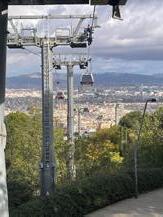



Thank you NZSSA for enabling this experience and I look forward to continuing to share what I have learnt with our members and people in the industry.

Below are the dates for articles etc for inclusion in the NZSSA Supplyline. Please contact me if there is something that you would like to see included in upcoming editions of Supplyline.
Aileen Derby Editor NZSSA Supplyline.NZSSA position on reprocessing of single use items
19 August 2022
The New Zealand Sterile Sciences Association (NZSSA) Does Not support the reprocessing of single use items under any circumstances.


Sterile Sciences Departments are responsible for the processing of Reusable Medical Devices (RMDs) only.
In New Zealand, standard AS/NZS 4187:2014 is the current Ministry of Health supported document for reprocessing of reusable medical devices in health service organisations.
Section 5.1.3. (f) states that: Medical devices labelled as or intended for single use and that have been used, SHALL NOT be reprocessed or reused. A medical device labelled with any of the following information or symbol (see below) SHALL be deemed to be a medical device intended only for single use.
In AS/NZS 4187: 2014 sterilisation standard the use of the word SHALL means that the practice being outlined is a mandatory requirement for a sterilising unit to comply with.
The Belimed WD 290IQ washer Disinfector, powered by Smarthub, is an intelligent solution for your Central Sterile department or healthcare facility, providing secure and fast instrument reprocessing.

It is equipped with high machine capacity and latest digital control technology enabling you to achieve perfect hygienic results, keep your costs under control and improve team efficiencies.
Belimed WD 290IQ is the beating heart of safe, rapid and efficient reprocessing.
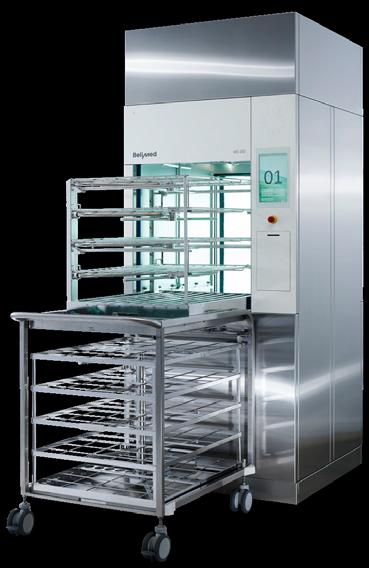
PLEASE SPEAK TO YOUR HEALTHCARE MANAGER FOR FURTHER INFORMATION
ECOLAB HEALTHCARE ANZ

7A Pacific Rise, Mount Wellington, Auckland 1060, New Zealand
NZ: 0800 425 529 www.healthcare-nz.ecolab.com
Education
Course & administration fees are covered for the student
NZSSA Conference, Wellington Conference registration, return flights, 3 days accommodation
FSRACA Conference, Melbourne Australia Conference registration, return flights, 3 days accommodation
WFHSS Congress, Belgium Conference registration, return flights, 5 days accommodation
For full details of the scholarships and application forms visit the Scholarship page: https://nzssa.org/scholarship/

Made
Code: GC-01-01
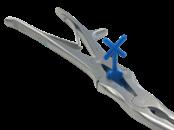
Packing Unit: 30


The concept of continuous quality improvement (CQI) is an intentional approach to improve a process at a given stage of producing an optimum result. A process in its simplest form is a series of steps executed to produce goods or services. (Hamm, 2016).
Walter Shewhart first studied quality as an industrial process in 1931. His concepts included identifying customer needs, reducing variations in processes, and minimizing inspections. (Varkey et al, 2007). Inspired by Shewhart’s work, Edward. W Deming, “Recognized quality as a primary driver for industrial success and subsequently introduced these methods to post-World War II Japanese engineers and executive”. (Varkey et al, 2007).
The Shewhart cycle method had three steps: specification, production, and inspection. Deming adopted this method and the method, Plan; Do; check; Action (PDCA) cycle was born. (Moen et al, 2009). Deming developed this method further and in 1986 he stated, “because the English work ‘check’ means to ‘hold back’, be sure to call it PDSA: (Moen et al, 2009, p. 7).
DO STUDY ACT
STUDY - THE RESULTS, WHAT DID YOU LEARN, WHAT WENT WRONG.
4.
CQI has become a management philosophy and method widely employed by various settings. (Radawski, 1999). It subscribes to the principle that opportunity for improvement exists in every process on every occasion. (Varkey et al, 2007). PDSA and other methods created for improvement originally for the manufacturing industry have been adopted into healthcare. (Cantiello, 2016).
Healthcare has evolved over time, with the advancements in technology and patients’ expectations. In the past, healthcare was focused on quality assurance; the delivery of services and/or product, and quality control; verifying and maintaining a level of quality. These methods alone were not sufficient to obtain an optimum result. (Varkey et al, 2007). Checking for defects and recommending changes without recognising the effects of these changes on other parts of the organization may improve one process but harm others. (Varkey et al, 2007). Consequently, organizations are now combining the quality assurance with CQI. (Varkey et al, 2007).
As healthcare providers, Central Sterilising Supply Departments (CSSD) for reusable medical devises (RMD) are responsible to ensure they are providing a service, which has a foundation of best practice and continuous improvement. (NZ Standards, 2021). The end user, ‘the patient’, “trust there are systems in place that keep me safe, are responsive, and are focused on improving my experience and outcomes of care”. (NZ Standards, 2021, p. 39).
Requirements for an RMD can vary depending on the service their provided for. Whether it is an individual or multiple RMDs in a set, the quality of the reprocessed RMD is measured against the end users requirements. When an RMD is not meeting these requirements, there can be a risk to all stakeholders.
As an example, a CSSD has had ongoing incidents of incomplete RMD sets leaving the department. A risk assessment was conducted, and it was found on several occasions the risk to stakeholders, was possible with moderate consequence. The risks ranged from breakdown in customer relations, extended theatre time under anaesthetic and recovery time extended for the patient, stress on doctors/nurses locating other RMD and/or deciding on an alternative procedure and cancelled cases.
It became clear there were several steps in the process, identified to be contributing to the risks. These were surface problems, with underlying causes. By using the fishbone diagram method, they were able to analyse possible root causes.
Using this method identified four main factors:
▪ The mixing of theatre cases together in the decontamination area.
▪ No method to identify split sets if required.
▪ Tracking system not updated.
▪ Written processes confusing and hard to follow.
The most significant problems identified were, tracking system not updated and no method used to identify the splitting of sets. This resulted in large amounts of left over RMDs on a daily basis.
With feedback and further discussions, a decision to start a plan for improvements starting within the decontamination area, to keep theatre cases together throughout the process. Hoping that this would help reduce potential risk to end users of incomplete sets and start pinpointing more accurately, where RMDs go missing. This would also contribute to a smarter workflow, uniform approach, and better communication among the team.
With the use of the PDSA cycle method, they have been able to make changes with the aim of improvement, conducting testing on a small scale before implementing on a larger scale. By studying the results to determine what they learnt and what went wrong, they can then adopt the changes or abandon and repeat until they have the optimum result.
Cantiello, J. e. (2016). The evolution of quality improvement in healthcare: Patient-centered care and health infromation technology applications. Journal of Hospital Administration.
Deming, W. E. (1982). Out of the Crisis. MIT Press.
Hamm, R. E. (2016). Continuous Process Improvement in Organizations Large and Small: a guide for leaders. New York: Momentum Press.
Moen, R. e. (2009). Evolution of the PDCA Cycle. Asian Network for Quality, (p. 7). Tokyo.
Radawski, D. P. (1999). Continuous Quality Improvement: Origins, Concepts, Problems, and Applcations. The Journal of Physician Assistant Education, 12-14.
Standards New Zealand. (2021). Nga paerewa Health and disability services standard. Nga paerewa Health and disability services standard NZS 8134:2021. Wellington : Standards New Zealand.
Varkey et al, P. a. (2007). Basics of Quality Improvement in Health Care. Mayo Clinic Proceedings.















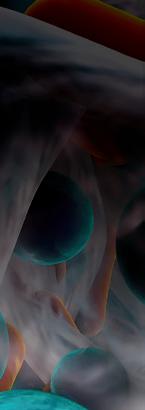








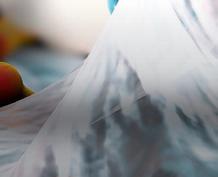


















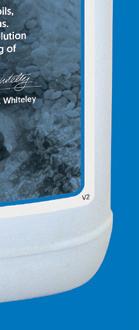
















Midland (& Upper North Island) CSSD REGIONAL MEETING in association with Essity Health & Medical
1st April 2023 8:30am -1pm
Waikato Hospital ‘Bryant Education Centre’ Hague Road, Hamilton
Midland (& Upper North Island) CSSD REGIONAL MEETING in association with Essity Health & Medical
1st April 2023 8:30am -1pm
Waikato Hospital ‘Bryant Education Centre’ Hague Road, Hamilton

Agenda
8:15-8:30 Arrival Tea & Coffee
8:30–9:00 Welcome & NZSSA Update
• 9:00-10:00 : Essity Presentation of (Multigate : Pro-Zone Sterilisation Wrap) ‘Surgical Flow’ Online Education Modules
• 10:00-10:20 : J&J Depuy Synthes - Robotics and Navigation for TKA’s – Changes to TKA Joint Arthroplasty & What does this mean to Sterilisation Department Seminar - Joint Replacement with Robotics (Video & on-screen Presentation)
Workshop Station A: – Navigation & TKA sets
• 10:20 – 10:40 : Stryker Trauma Kit & Power Tools How are these used in Theatre? Kayley Kelly & Jin Girvan
Workshop Station B: Stryker Power Tools - CSSD Care & Maintenance.
10:40 - 11am : Brunch
• 11 – 11:30am : OBEX – 2 x 15min Instrumentation Focus & HiPOT Testing (Mehdy Farzaneh & colleagues)
Workshop Station C: OBEX Focused on Instruments & Station D: HiPOT testing
11:30 – 12.45am : Hands On WORKSHOPS Rotations
Station A: J&J Depuy-Synthes - Robotics and Navigation for TKA’s - Station B: Stryker Trauma Kit & Power Tools CSSD Care & Maintenance
Station C: OBEX Instruments & Station D: HiPOT testing
12:45 - 1pm Certification, Feedback Forms : Finish
Midland (& Upper North Island) CSSD REGIONAL MEETING in association with Essity Health & Medical 1st April 2023 8:30am -1pm
Waikato Hospital ‘Bryant Education Centre’ Hague Road, Hamilton
Midland (& Upper North Island) CSSD REGIONAL MEETING in association with Essity Health & Medical 1st April 2023 8:30am -1pm
Waikato Hospital ‘Bryant Education Centre’ Hague Road, Hamilton





RSVP with Staff Names by Friday 24th March 2023 email to lindsay.mccord@essity.com (021 678 352) & please CC. jenny.carston@bopdhb.govt.nz (0272691325)
Any Dietary requirements please let Lindsay know for catering purposes
WAIKATO HOSPITAL BRYANT EDUCATION CENTRE
Toi Ohomai Institute of Technology Ltd NZ
Diploma in Sterilising Technology (Level 5)
Nathaniel Atienza
Ibraam Faltas
Jeyarajah Velluppillia
Shalini Kumar


• Trimester 1 starts Monday 20 February 2023 J
• Students for this trimester have already been enrolled and will have access to their learning from 17 October
• Enquiries regarding your application:
• email: SterilisationApps@toiohomai.ac.nz
• Prepare for study:
• Devices for study – smart phones and tablets are alright for the learning, a computer or laptop is needed for the portfolio assessment tasks.
• Study plan - to fit study around work and family – this study is at distance and you will have to do it in your own time. Allow 12 – 16 hours per week
• Check your internet connection – you will need this to access the online learning modules, library and upload portfolio assessment tasks.
• Throughout your study you will have full support from Toi Ohomai in the same way a student coming onto campus does. Your tutor can connect you with the student support services.


https://medicalxpress.com/news/2022-10-manual-medical-instruments-exposes-staff.html

Credit: Pixabay/CC0 Public Domain
A new study published today in the American Journal of Infection Control (AJIC) shows that manual cleaning of reusable medical instruments generates substantial splash more than seven feet from the source. The findings reinforce the importance of engineering controls and appropriate use of personal protective equipment (PPE) to reduce the risk of contamination for both processing personnel and their facilities.
“This study confirms that technicians working in sterile processing departments are at risk for exposure to water droplets that may contain blood, tissue and other patient fluids,” said Cori L. Ofstead, president and CEO of Ofstead & Associates, and the paper’s lead author. “Even in a sterile processing department optimally designed to reduce potential exposures, we were surprised by the abundance of droplets generated during the performance of instrument processing steps that were completed in accordance with manufacturers’ instructions for use.”
The study expands upon a pilot project completed by Ofstead and colleagues in 2021—the first real-world evaluation
of PPE effectiveness for sterile processing personnel—which concluded that personnel who process reusable medical instruments and equipment may be exposed to tissue, blood, and other patient fluids even when wearing recommended PPE. Previous research has demonstrated a link between contamination disseminated from sinks and healthcare facility outbreaks.
The current study was conducted at a large, urban academic medical center, within a new sterile-processing department that had been designed to optimize workflow and prevent cross-contamination. To quantify the amount of splash generated during manual processing activities, characterize droplet dispersal patterns, and assess PPE effectiveness, researchers engaged experienced, certified processing personnel to conduct simulated processing of a gastrointestinal endoscope and an ultrasound probe following manufacturers’ instructions for use (IFU). Prior to the simulations, moisture-detection paper was affixed to the PPE of technicians working at the sink and stationed 3-4 feet away, as well as environmental surfaces, including the department floors.
Following completion of the cleaning tasks, researchers measured the quantity of droplets generated as well as the extent of dispersal. Results show that every processing cycle generated splash at some point, with droplets detected up to 7.25 feet away from the processing sink. Some activities, particularly rinsing the ultrasound probe per IFU, generated substantial splash that exposed the environment and equipment near the sink, as well as the processing technician performing the cleaning. The technician at the sink was exposed to droplets from head to toe during most activities and extensive droplets were detected on gowns and shoe covers worn by technicians 3-4 feet away.
Beyond the implications for individuals in and around the processing sinks, splash represents a potential contamination source for other staff and patients in healthcare facilities. Standards state that liquids can act as a vehicle for the transfer of microorganisms. In the current study, transporting wet endoscopes dispersed droplets on a 15-foot path from the sink to the automated endoscope reprocessor.
“This study is instructive for infection preventionists and workplace safety professionals, providing a backdrop against which they should review Sterile Processing Department workflows and evaluate whether additional infection prevention or engineering control measures are needed to best protect workers and others in their facilities,” said Linda Dickey, RN, MPH, CIC, FAPIC, 2022 APIC president. “It also reinforces the critical importance of a safety culture that supports workers—including processes and training that facilitate appropriate usage of PPE, such as sufficient time to doff and re-don PPE during the course of reprocessing instruments—for adequate protection from moisture strikethrough.”
Explore further
Medical instrument processing personnel may be exposed to tissue, blood, and patient fluids: study
More information: Splash generation and droplet dispersal in a well-designed, centralized high-level disinfection unit, American Journal of Infection Control (2022). DOI: 10.1016/j.ajic.2022.08.016
Journal information: American Journal of Infection Control
President: Shelagh Thomas
CSSD
Hutt Valley
Capital, Coast and Hutt Valley
Phone: 04 566 6999 ext 2745
Mobile: 027 589 6473
Email: shelagh.thomas@huttvalleydhb.org.nz
Maureen Scott
Sterile Services
Hamilton
Waikato District Health Board
Email: Maureen.Scott@waikatodhb.health.nz
Karen McCormick
CSSD Manager
Wellington
Capital, Coast and Hutt Valley
Email: Karen.mccormick@ccdhb.org.nz
Sharon Moss
National Sterile Services Manager
Southern Cross Health Christchurch
Email: sharon.moss@southerncrosshospitals.co.nz
Jenny Carston
CSSD Manager
Tauranga
Hauora a Toi Bay of Plenty
Email: Jenny.Carston@bopdhb.govt.nz
Treasurer: Alison Stewart
NZSSA Treasurer
28 Brighton Street Island Bay
Wellington 6023
Mobile: 021 209 8127
Email: nzsterilescienceassoc@gmail.com
Secretary: Paul Moody
Senior Product Development Manager
Fisher & Paykel
Auckland
Email: paul.moody@fphcare.co.nz
Anthony Valvoi Sterile Services
New Plymouth
Taranaki
Email: anthony.valvoi@tdhb.org.nz
Martin Bird
Sterile Services
Dunedin
Southern
Email: martin.bird@southerndhb.govt.nz
Aileen Derby
CSSD Manager
Manukau Counties Manukau
Email: Aileen.Derby@middlemore.co.nz
Kelly Swale
Sterile Services Manager
Faculty of Dentistry, University of Otago
Dunedin
Email: kelly.swale@otago.ac.nz

